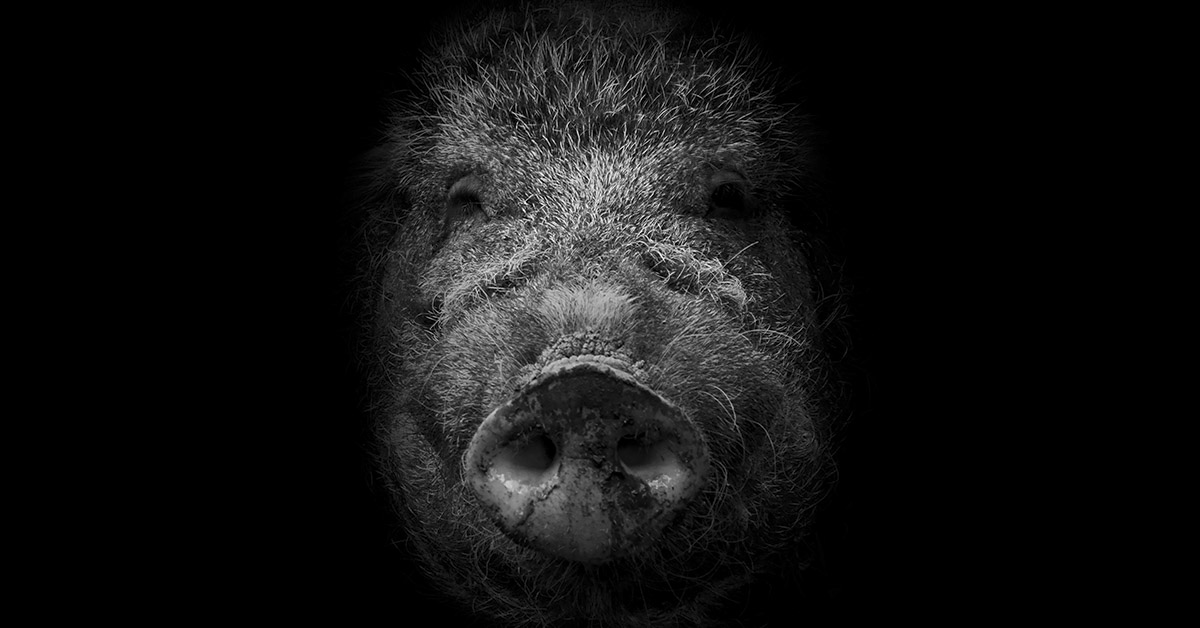A hybrid breed of “super pigs” are running around Canada and now it seems like they are migrating toward the United States. These pigs are a mix of domestic pigs and wild boars. They were originally crossbred to make farmed pigs larger and more resistant to Canada’s cold climate. But when the market demand dropped, some farmers released their super pigs into the wild. Now, the pigs are expanding their turf, and they are surprisingly hard to hunt.
Super Pigs are Roaming Across Canada
Dr. Ryan Brook, who leads the University of Saskatchewan’s Canadian Wild Pig Research Project, explains that super pigs are a recent issue. “The U.S. has a 400-plus year history with invasive wild pigs, but we didn’t have any here until the early 1980s,” he says. “There was a big push to diversify agriculture with species like wild boards and ostriches. Wild boars were brought in from Europe to be raised on farms across Canada.” [1]
Most of these pigs had resided on meat farms, but some of them came from high-fence hunting preserves. Farmers and ranchers decided to breed them into pigs that are larger and more suited to the cold weather. “For surviving in cold winters, one of the rules of ecology is: the bigger the better,” Brook says. “Larger body animals survive the cold better and have better reproduction in those conditions.”
However, this demand plunged in Canada in the early 2000s. At that point, some super pigs escaped from their owners and others were released to free space in farms for more profitable products. So, for the past two decades, the population of these wild super pigs increased. These wild boars live primarily in the provinces of Alberta, Manitoba, and Saskatchewan; their roaming grounds are spread across about 620,000 square miles.
“That they can survive in such a cold climate is one of the big surprises of this issue. The Prairie Provinces are where we have the coldest winters in Canada except for the very far north,” says Brook. “One of the things they do to survive is tunnel under the snow. They go into a cattail marsh and channel into the soft snow and cut nests in the cattails. If you go early in the morning on a cold day, you can actually see steam pouring out the top of the nests.”
The Impact on the Environment and Wildlife
Additionally, these new species negatively impact their ecosystem. These super pigs are large, with the largest one reported being over 660 pounds. Big animals need to eat and native species are suffering as a result. “Wild hogs feed on anything,” explains Brook. “They gobble up tons and tons of goslings and ducklings in the spring. They can take down a whitetail deer, even an adult. Originally, it was like ‘wow, this is something we can hunt.’ But it’s become clear that they’re threatening our whitetail deer, elk, and especially, waterfowl. Not to mention the crop damage. The downsides outweigh any benefit wild hogs may have as a huntable species.” [2]
Moreover, these pigs damage natural habitats and displace wildlife, as well as ruin farmers’ crops. They can also carry up to 89 diseases, including swine brucellosis, pseudorabies, leptospirosis, and trichinosis, which can harm farm livestock, Additionally, they can contaminate public drinking water sources with E. coli and other kinds of bacteria. Unfortunately, this species can reproduce quickly, since females can bear four to twelve piglets every year. [3]
Even worse, northern parts of the U.S. may also come under attack. “We have already documented pig occurrences less than 10 miles from the U.S. border. Quite honestly, I think there have already been some in Manitoba going into North Dakota for the last 5 or 6 years,” says Brook. Since there is no physical border between the two countries, a super pig invasion is a real possibility.
“Report any sightings”
Unfortunately, Brook has likened eradicating these pigs to eradicating mosquitoes. As in, it’s too late to get rid of all of them. Nevertheless, local authorities are working to combat this issue. One strategy involves ground-trapping herds of pigs at a time. Another involves tracking a specific pig through a GPS collar to find other boars. However, recreational hog hunting has not been effective at helping this issue, since it breaks up herds, makes them change their roaming patterns, and causes pigs to become nocturnal and thereby harder to find.
Therefore, locals should help the issue by reporting to authorities. “Report any sightings of wild pigs,” Brook says. “There’s a Squeal on Pigs program in the U.S. and Canada. You can also report wild pigs to someone like your local game warden. Early detection and action are critical.”
Keep Reading: Beef from gene-hacked ‘super cows’ cleared to be sold in the US
Sources
- “Population Explosion of Canadian “Super Pigs” Could Spread Into the Northern U.S.” Field and Stream. Sage Marshall. January 18, 2023.
- “Invasion of the super pigs? Hybrid species could wreak havoc in the United States.” Fast Company. Connie Lin. February 23, 2023
- “Destructive ‘Super Pigs’ From Canada Threaten the Northern U.S.” Smithsonian Magazine. Margaret Osborne. February 27, 2023

